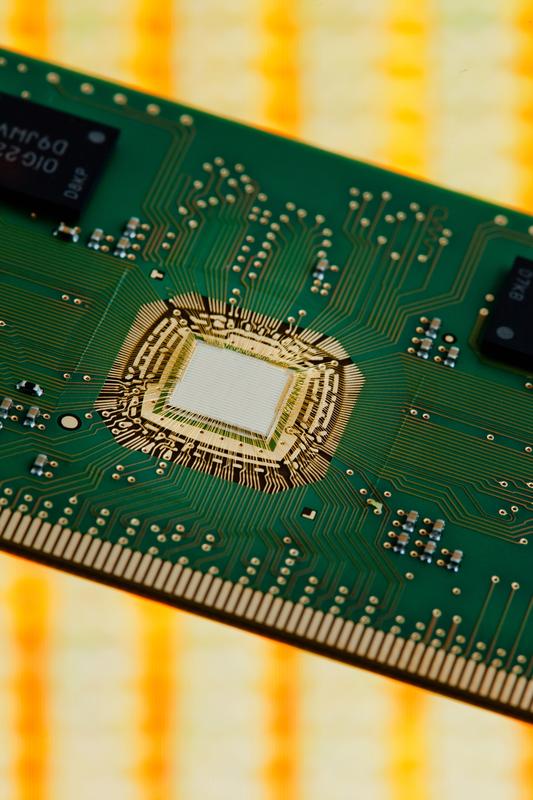

Photo: Jürgen Lösel
The new Tomahawk is extremely fast, energy-efficient and resilient. It is a heterogeneous multi-processor which can easily integrate very different kinds of devices.
The researchers of the Cluster of Excellence for microelectronics of Technische Universität Dresden use the new prototype to prepare the so-called ‘tactile internet’.
With this, very big data volumes shall be transmitted with high end-to-end latency and allow completely new applications, e.g. vehicles that are able to react automatically to any obstacles on the road.
Driving bumper to bumper would be possible as sensors would regulate the distance between. Other innovations might be used for example in the areas of telemedicine and E-Learning, in Google glass and smartphone applications.
“This is the next step of the digital revolution“, the Cluster coordinator Prof. Gerhard Fettweis says. He expects the realization to begin in 2020. However, powerful mobile networks are necessary to support the applications in the every-day use.
To realize the 5th generation of mobile communication, Technische Universität Dresden will collaborate with the London’s Kings College and the University of Surrey.
In February, the “Tomahawk2” was presented for the first time at the International Solid-State Circuits Conference (ISSCC) in San Francisco. The first presentation of the new TUD microchip in Germany will be at the upcoming the “Design, Automation & Test in Europe Conference” (DATE’14) Conference in Dresden next week.
Further enquiries:
Birgit Holthaus
cfaed Press officer
Phone+49 351 463-42848
birgit.holthaus@tu-dresden.de












